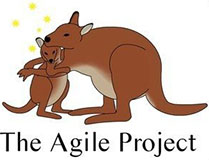VETS AND VOLUNTEERS WANTED!
Are you looking to gain Macropod Relocation experience? Capable of some heavy lifting and early-morning work? Wanting to be part of a project that’s helping change the way Australia manages human-wildlife conflicts?
THEN WE WANT YOU!
THE WALLABY RELOCATION PROJECT
The Agile Project is soon continuing the approved relocation of another 400 wallabies from Trinity Beach, Cairns.
From the beginning of July, we will be performing relocations five days a week, for eight weeks straight (dependant on weather conditions and volunteer availability etc…).
Aiming to create a roster that allows people from all around Australia to gain experience. Focusing on involving Wildlife Rescuers and Carers that already have some macropod-handling experience. You will be formally trained, inducted and assessed in our approved relocation protocols, before entering the field. Every team member will feel completely competent prior to any “go time” action.
We hope many of you have been waiting for this opportunity so we’re looking forward to hearing from you!
Please see the registration form below, otherwise the best way to get in contact is to call or text us on 0467022358. Alternatively you can email: secretary@theagileproject.com.au.
Added information for vets:
Vets are required to supply the diazepam that is used for sedation (costs covered). The primary role of the Veterinarian is to administer the restricted medication and perform a basic health-check on each relocated wallaby. The usual start time is 3am for trap setting but Vets can arrive at 4:30am in time for the capture process.

PROJECT BACKGROUND
The Agile Project is a group of Citizen Scientists and Wildlife Rescuers. We are tackling the problem of a large population of Agile Wallabies, which are living in a sporting precinct ringed by highways, busy arterial streets, and housing developments. The result is that there’s a population that ranged between 800 and 1100 animals where some 700 die every year on the roads that surround the area. High reproductive rates due to grazing on irrigated/fertilized sports turfs and migration from developments in progress has kept the population relatively stable. Here’s a link to our casualty map, we’re running out of space for data points. Our data is also online and updated daily, but the map represents much of the data quite accurately.
We’ve been issued a series of permits by State Government to move 800 animals to safer and wilder habitat and have already successfully moved 400 animals with near zero mortality in the trapping/handling/moving process. Our trail-cam footage shows tagged animals surviving and thriving at release sites. These sites have been assessed and approved by Ecologists as “appropriate” and “safe”, then signed-off by State. After the second 400 animals have been relocated, a census/birth control program will be implemented. The goal being to have a small resident population in the area, kept a much lower number that better reflects the amount and quality of the natural habitat that will remain after development is completed. (Much of the community considers a local population as an asset, not a nuisance). The next relocation of 400 is being funded by the Cairns Regional Council, and the reproductive control program has been funded by the State.
Given that this is an increasing problem across many suburban areas on our coast, we’d really like for what we have done to serve as a model for other groups to translocate wildlife and save State and academic expertise for handling the truly rare and endangered species. To do that we’d like to have better data on the movements and outcomes of the translocated animals, and perhaps enable us to ask/answer questions about release site characteristics, how effective worming or other treatments administered as a part of the translocation are. We’ve got a team of Scientists eagerly on board, looking forward to analysis and publication of the data we collect.
